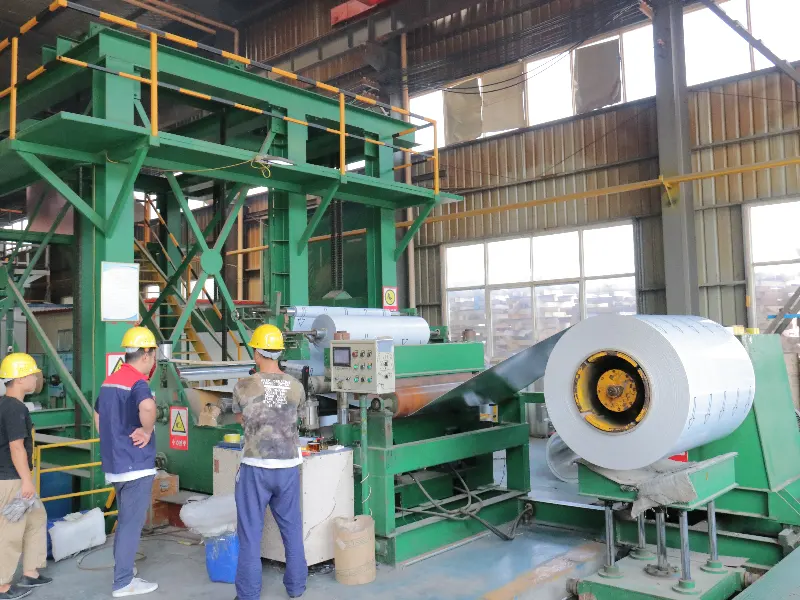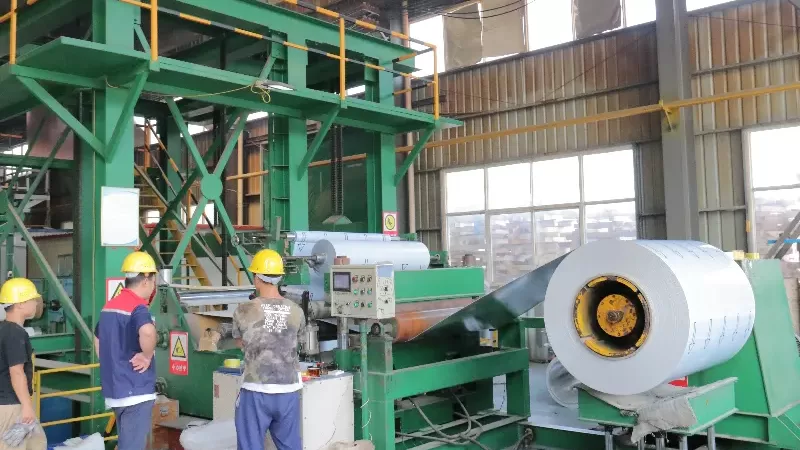Unlocking Superior Performance and Aesthetics Through Coatings
Have you ever wondered why aluminium looks so different in various products? From shiny car parts to colorful window frames, much of the aluminium we see isn’t just plain metal. It’s often aluminium coated. But what is aluminum coated? Simply put, it means a layer of another material has been applied to the surface of the aluminium.

Diverse Ways to Coat Aluminium: Common Methods & Specifications
There are several popular and effective methods to create coated aluminium, each offering unique benefits and characteristics.
| Coating Method | Process Summary | Key Benefits | Types & Typical Specifications |
|---|---|---|---|
| 1. Anodizing (Electrochemical Coating) | Aluminium surface is converted into a durable anodic oxide finish in an acid bath using electric current. | Excellent corrosion and wear resistance, can be dyed, electrically insulative. | Type I (Chromic Anodize): Thin (1.3-2.5 microns), good corrosion. Type II (Sulfuric Anodize): Common (5-25 microns), good corrosion/abrasion. Type III (Hardcoat Anodize): Very hard (25-50+ microns), excellent wear. |
| 2. Powder Coating (Dry Paint Application) | Powdered paint is electrostatically applied to aluminium and then cured under heat. | Very durable, resistant to chipping/scratching/fading, wide range of colors, environmentally friendly. | Typical thickness: 0.002-0.006 inches (50-150 microns). |
| 3. Liquid Painting (Wet Paint Application) | Wet paint (resins, pigments, solvents) is sprayed, brushed, or dipped onto the aluminium, then dries. | Extremely wide color range, specific functional properties (e.g., anti-graffiti), applies to complex shapes. | Acrylic, Urethane, Epoxy paints. Typical thickness: 0.0005-0.002 inches (12.5-50 microns), often multiple coats. |
| 4. Plating (Metallic Coatings) | A thin layer of another metal (e.g., nickel, chrome, zinc) is deposited onto the aluminium using an electrochemical process. | Enhanced hardness, wear resistance, electrical conductivity, solderability, decorative finish. | Nickel Plating: (2.5-12.5 microns) for wear/solderability. Chrome Plating: (0.25-2.5 microns) for shine/hardness. Zinc Plating: (5-12.5 microns) for sacrificial corrosion. |
| 5. Conversion Coatings (Chemical Pre-treatment) | Formed by a chemical reaction on the aluminium surface, converting it into a new, protective layer. Often a paint base. | Excellent corrosion resistance, acts as a primer for paint adhesion, maintains electrical conductivity (some types). | Chromate Conversion: (0.25-0.75 microns) gold/clear, excellent corrosion/adhesion. Phosphate Conversion: (1-2.5 microns) grey/black, good paint base. |
Where You Find Coated Aluminium
You’ll see it extensively in architecture & construction for window and door frames, facades, roofing, and decorative panels. The automotive sector uses it for wheels, trim, engine components, and body panels. Aerospace relies on it for aircraft components, structural parts, and interior finishes. Even marine environments use coated aluminium for boat parts and masts exposed to saltwater, while electronics benefit from it in heat sinks and circuit board enclosures.
Choosing the Right Coating for Your Aluminium Project
Selecting the ideal aluminium coating process depends on the specific requirements of the application. Key factors include the environment the item will be in (indoors, outdoors, exposed to chemicals or high temperatures), the required performance needs (extreme hardness, electrical insulation, corrosion protection), desired aesthetics (color, texture, gloss), cost considerations, and any relevant regulatory requirements, especially for certain chemical-based coatings.
Caring for Your Coated Aluminium
To maintain the look and performance of aluminium coated products, regular cleaning with mild soap and water is generally sufficient. Avoid abrasive cleaners, harsh chemicals, or steel wool, as these can damage the coating. For specific coatings like anodized or powder-coated surfaces, always follow the manufacturer’s recommended cleaning instructions to ensure longevity and preserve the finish.
The Enduring Importance of Aluminium Coatings
In summary, coated aluminium offers a significant upgrade over raw aluminium, delivering enhanced durability, improved aesthetics, and specialized functional properties that make aluminium suitable for an even wider range of challenging and demanding applications.
This surface treatment ensures that aluminium products not only perform better but also last longer and look great.
From making aluminium more resistant to the elements to transforming its appearance, coatings are essential for leveraging aluminium’s full potential. Whether for a high-performance aerospace component or a stylish piece of outdoor furniture, choosing the right coating ensures that aluminium delivers its best, proving itself as a truly versatile and reliable material.
Quality Standards and Testing
International Standards:
- ISO 14713: Protection against corrosion
- ASTM A928: Hot-dip aluminum coating requirements
- EN 13811: Thermal spray aluminum coatings
- JIS H 8642: Electroplated aluminum coatings
Quality Tests:
- Thickness measurement (micrometer, eddy current)
- Adhesion testing (tape test, cross-hatch)
- Salt spray testing (ASTM B117)
- Bend and formability tests
- Chemical resistance testing
Maintenance and Durability
Expected Service Life:
| Environment | Service Life | Maintenance Needs |
|---|---|---|
| Rural Atmosphere | 20-30 years | Minimal, occasional inspection |
| Urban Environment | 15-25 years | Regular cleaning |
| Coastal Areas | 10-20 years | More frequent inspection |
| Industrial Areas | 8-15 years | Regular maintenance |
Maintenance Tips:
- Regular cleaning with mild detergents
- Avoid abrasive cleaners
- Inspect annually for damage
- Touch up damaged areas promptly
- Follow manufacturer’s guidelines
Environmental Considerations
- Recyclability: Aluminum coatings are fully recyclable
- Energy Efficiency: Reflective properties reduce cooling costs
- Long Lifespan: Reduces resource consumption through durability
- Low VOC: Many coating processes have low environmental impact
- Sustainable: Extends life of underlying materials
Frequently Asked Questions
Q: Is aluminum coating better than galvanizing?
A: Aluminum coating offers better high-temperature resistance and aesthetic appeal, while galvanizing provides better sacrificial protection in severe environments.
Q: Can aluminum coating be to non-metallic surfaces?
A: Yes, through processes like vacuum deposition or special priming systems for plastics and composites.
Q: How long does aluminum coating last?
A: Typically 15-30 years depending on environment and coating thickness.
Q: Is aluminum coating food-safe?
A: Yes, when properly applied and certified for food contact applications.
Q: Can aluminum-coated surfaces be painted?
A: Yes, with proper surface preparation and compatible paint systems.
|
|
